While the title may sound familiar for Harry Potter fans, this isn’t an article about mythical beasts. You can find several stories on mythical/spiritual beasts in India, but that’s for another article. If you want to find the wild and the weird, you do not need to turn to fantasy. A quick dip in India’s flowing rivers, lakes or caves would reveal some critters which seem to come right out of a sci-fi novel.
India is one of the most mega-diverse countries when it comes to freshwater biodiversity. Approximately, 9.7% of the total fauna are associated with freshwater ecosystems, several of which are endemic and unique to India. For instance, the Ganga-Brahmaputra system exhibits among the highest richness of large-bodied freshwater species (freshwater mega-fauna) in the world and supports unique and threatened species.
Of the approximately 450 families of freshwater fishes present globally, roughly 41 are represented in India, out of which 25 families contain commercially important fish species. The Western Ghats, a global biodiversity hotspot, alone host 288 fish species of which 118 species are endemic.
The Eastern Himalaya, another biodiversity hotspot, contains exceptional freshwater biodiversity and ecosystems that are of vital importance to local and regional livelihoods.
Unknown to most, India is also home to some fascinating freshwater fauna (and flora) found nowhere else in the world. Let’s take a look!
-
Gollum snakehead

Gollum snakehead. © Britz, R., et al. (2020). Aenigmachannidae, a new family of snakehead fishes (Teleostei: Channoidei) from subterranean waters of South India. Scientific Reports, 10:160180. In 2019, when a group of scientists discovered this fish in the Western Ghats, South India, they were baffled.
With odd features such as uniform, cinnamon brown and long, eel-like body, scales and delicate, veil-like fins, the Gollum snakehead harbors an unexpectedly large number of primitive characteristics.
The scientists ultimately went on to classify the fish as a new species, under a new genus (Aenigmachanna). Considered a “living fossil”, the Gollum snakehead is a fish species found in the groundwater and aquifer ecosystems of the southern Western Ghats.
Unlike many groundwater species – which usually have reduced coloring and have poor or no vision – the Gollum snakehead has well-developed pigmentation and normal-sized eyes. The species is at least a 109 million years old, and it once thrived alongside some of the last dinosaurs in the region.
This fish was a serendipitous discovery when several individuals were washed out of their aquifer habitat and into a paddy field during the 2018 Kerala floods. Its aquifer/groundwater habitat is threatened as the region has the highest density of homestead wells in India, almost 50% of which run dry during the summer.
-
Blind mahseer
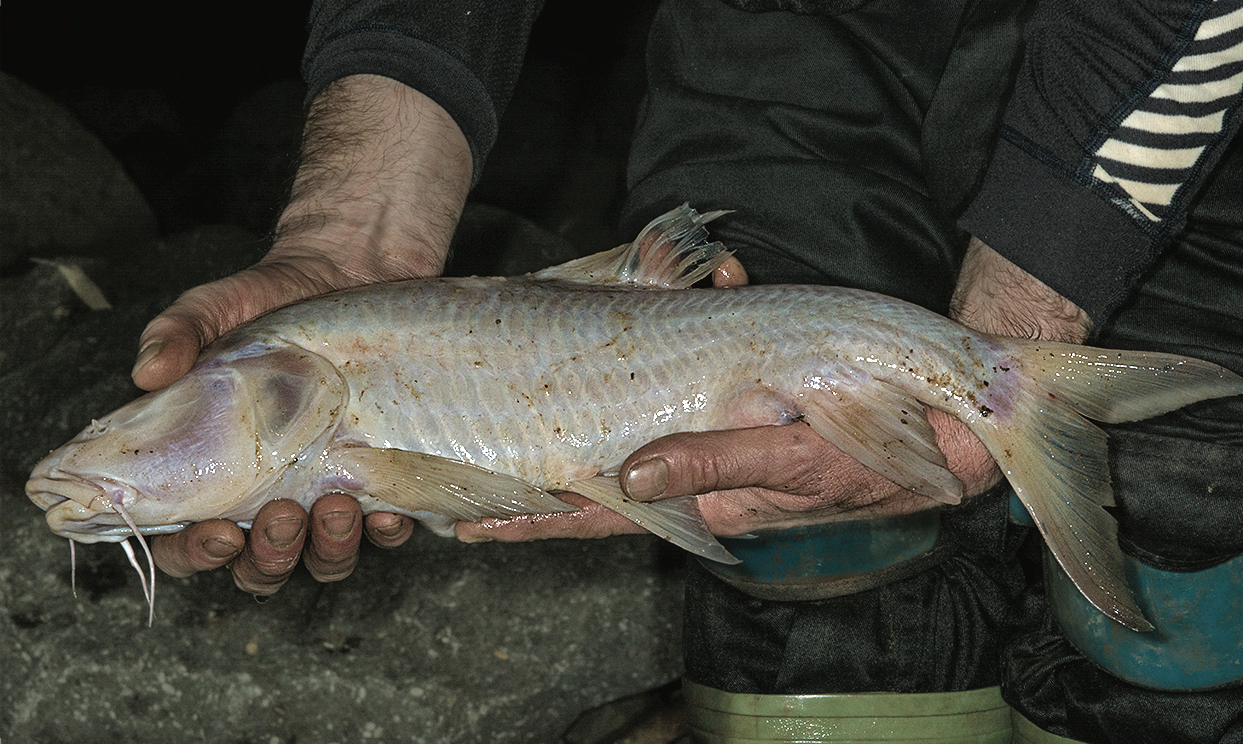
© J. Burgers. Previously published in Cave and Karst Science, Vol.46, No.3 (2019) Described as the “world’s largest subterranean fish”, this unique fish is nearly five times the average length (8.5 cm) of all known subterranean fish to date. It was discovered in 2019 in the damp, dark, deep caves of Meghalaya, a northeastern state of India, a biodiversity hotspot.
Like the Gollum snakehead, it inhabits the aquifer systems and like most below-ground species is devoid of eyesight.
The fish is related to the golden mahseer, one of the most famous game fish of the Himalayan rivers, but has no eyes and is white due to lack of melanin pigmentation.
-
Gangetic dolphin
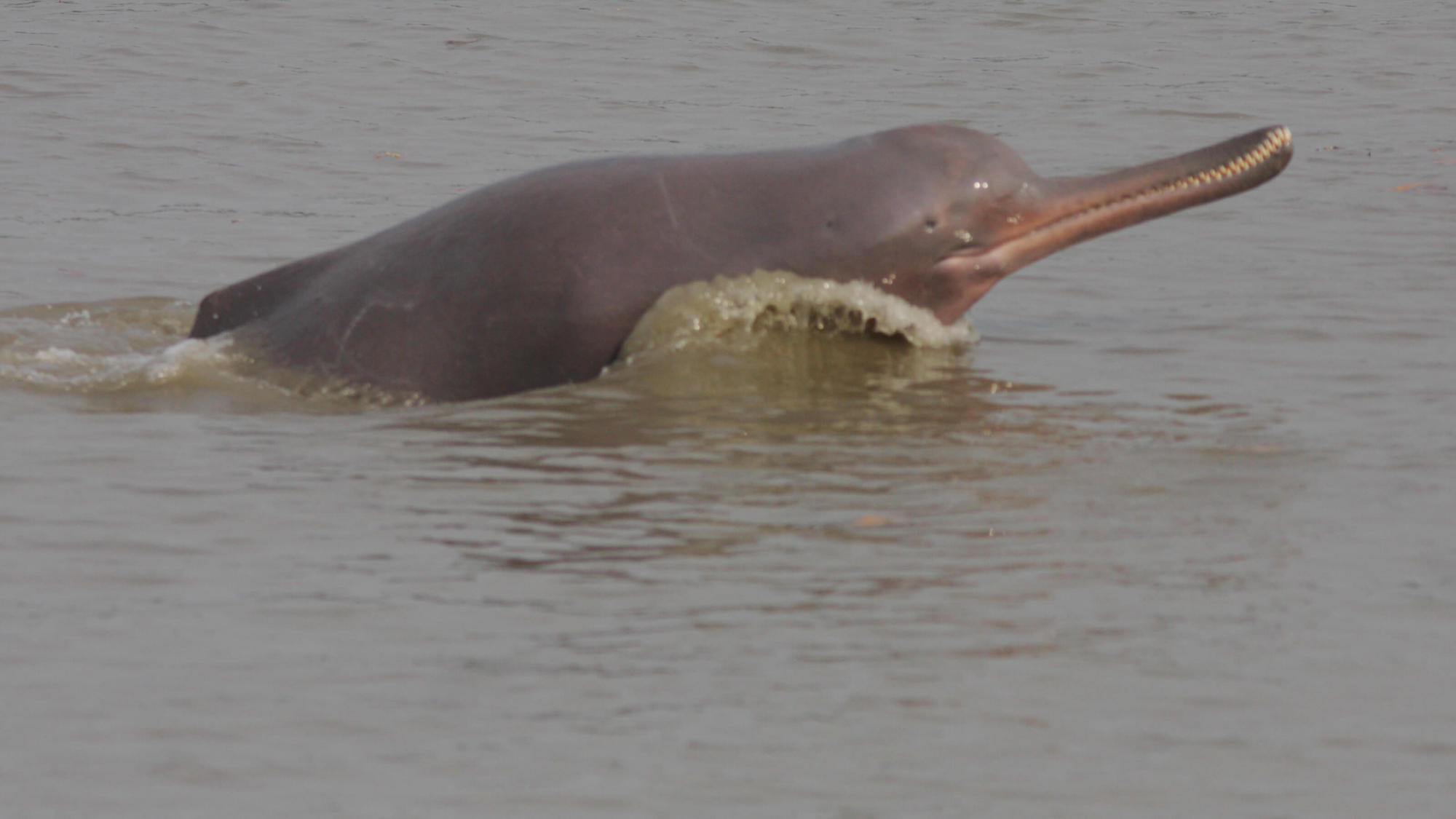
A Ganges river dolphin. © Zahangir Alom, NOAA / Wikimedia Commons While the Bengal tiger is the national animal of India, this charismatic species is the national aquatic animal.
Locally known as Susu, the Gangetic dolphin (Platanista gangetica) is an iconic flagship aquatic species inhabiting the Ganges-Brahmaputra-Meghna river system. As they dwell within muddy waters, it relies very little on eyesight and as a result has tiny, non-functional eyes that lack lenses.
Instead, they use echolocation to detect food, navigate and communicate. It is the only mammalian predator in the river Ganga that is exclusively aquatic. As an umbrella species and the apex of the aquatic food chain, it plays a vital role in maintaining ecosystem functions and processes.
Recently, in 2013, this species was granted “nonhuman persons” status by the government. It is commonly associated with the River Ganga which has enormous cultural and spiritual significance.
Unfortunately, despite its importance, the species has seen a continuous decline in its population and range over the years. Currently, fewer than 2000 individuals have been reported to exist within its distribution range and categorized as Endangered on the IUCN Red List.
-
Gharial
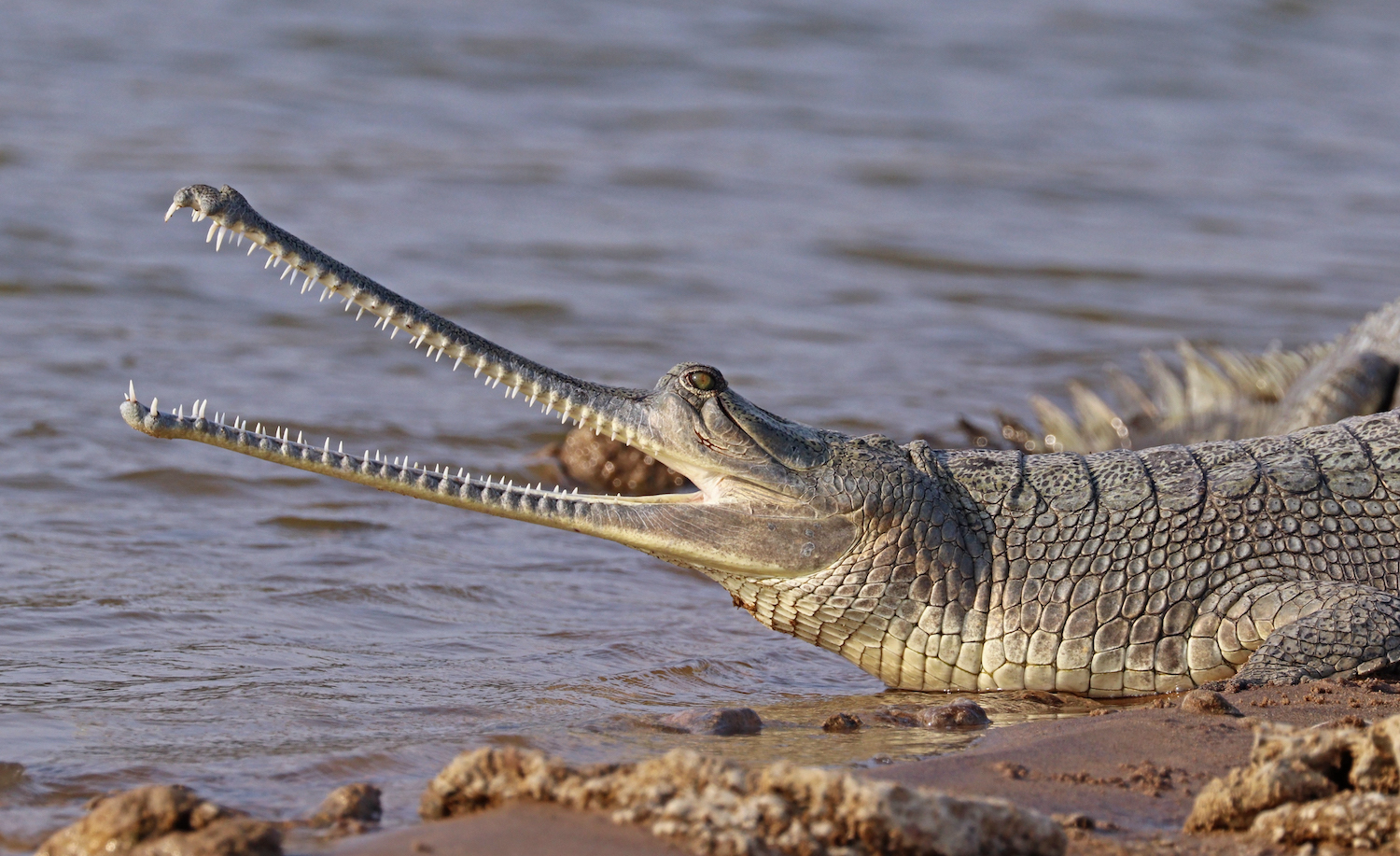
A gharial on the Chambal River. © Sharp Photography / Wikimedia Commons This crocodilian species was named after a traditional Indian pot (“ghara”), owing to the distinctive long, thin jaws which it uses to catch fish. Males have a large, bulbous snout, resembling a pot.
The gharial (Gavialis gangeticus) is piscivorous and the most aquatic of all the crocodilian species. It is endemic to the Indian subcontinent occurring in the Indus, Ganga, Brahmaputra and the Mahanadi river systems. Along with the freshwater dolphin, it is recognized as a keystone species for freshwater ecosystems.
This species is also revered in the Hindu mythology, where the gharial is the vehicle of the river deity Ganga and of the wind deity Varuna.
This unique crocodilian, unfortunately, is currently on the brink of extinction and currently listed as critically endangered in the IUCN red list as its population has seen a decline up to 98% since the 1940s.
Once widespread across the Indian subcontinent but are now restricted to as few as five severely fragmented and depleted populations across India and Nepal. Fewer than 250 adult individuals are now remaining in the wild.
-
Purple Frog
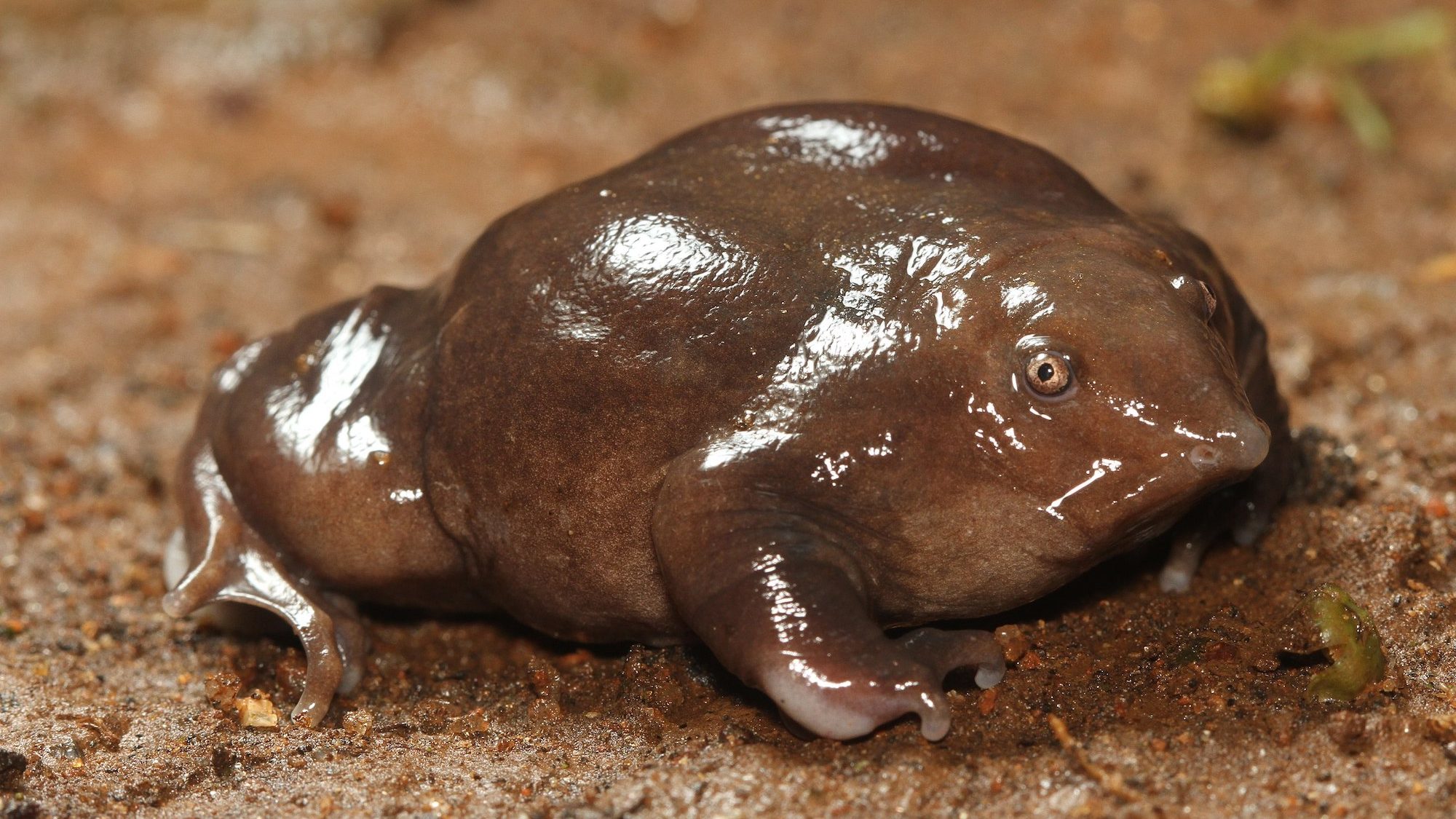
India’s purple frog, Nasikabatrachus sahyadrensis. © David V. Raju / Wikimedia Commons With a unique color and a bizarre appearance, this frog is another species endemic to the Western Ghats. The purple frog or the pignose frog (Nasikabatrachus sahyadrensis), was first discovered in October 2003 in the Idukki district of Kerala state and the discovery has been considered as a “once in a century find” by bio-geographers all over the world.
Purple in color, it appears robust and bloated and is relatively rounded, resembling a turtle without its shell.
The frog is a burrowing species spending most of its life underground and surfacing only during the monsoon, for a period of 2-3 weeks, to mate. Its tadpoles have specialized sucker-like mouthparts which they use to cling onto the algae covered rocks – an adaptation to living in fast flowing waters.
The local and tribal communities believe that this frog has medicinal and spiritual properties (an amulet derived from the frog is worn by children to conquer their fear of storms) and harvest them for the same.
The purple frog is listed as Endangered by the IUCN Red List primarily threated by habitat loss due to human encroachment. Currently, only 135 individuals of this species are known.
-
Dancing frogs
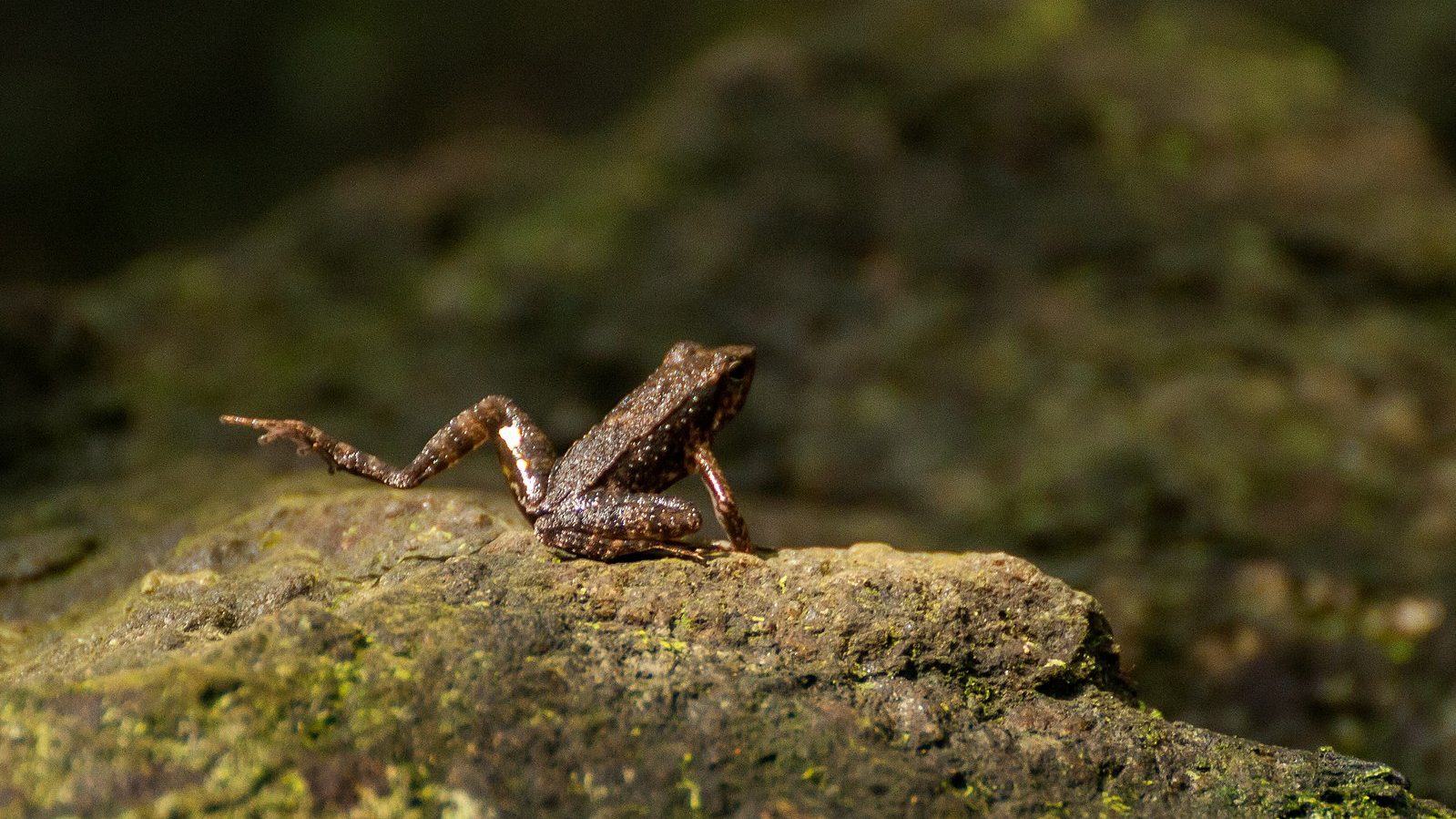
These frog species would have made Elvis Presley jealous. Their flamboyant leg movement “foot-flagging” has lent them their unique name.
Male dancing frogs twist, extend and wave their hind legs in a display to attract females, unlike most frog species which usually croak.
It is believed that these species have evolved to “dance” as they inhabit fast flowing rivers where croaking would have been drowned out by the noisy water.
Around 14 new frog species of this genera (Micrixalus) were recently described, which were found by researchers over a period of 12 years. These species are endemic to the Western Ghats, several of which are critically endangered or vulnerable owing to habitat loss.
-
Phumdi
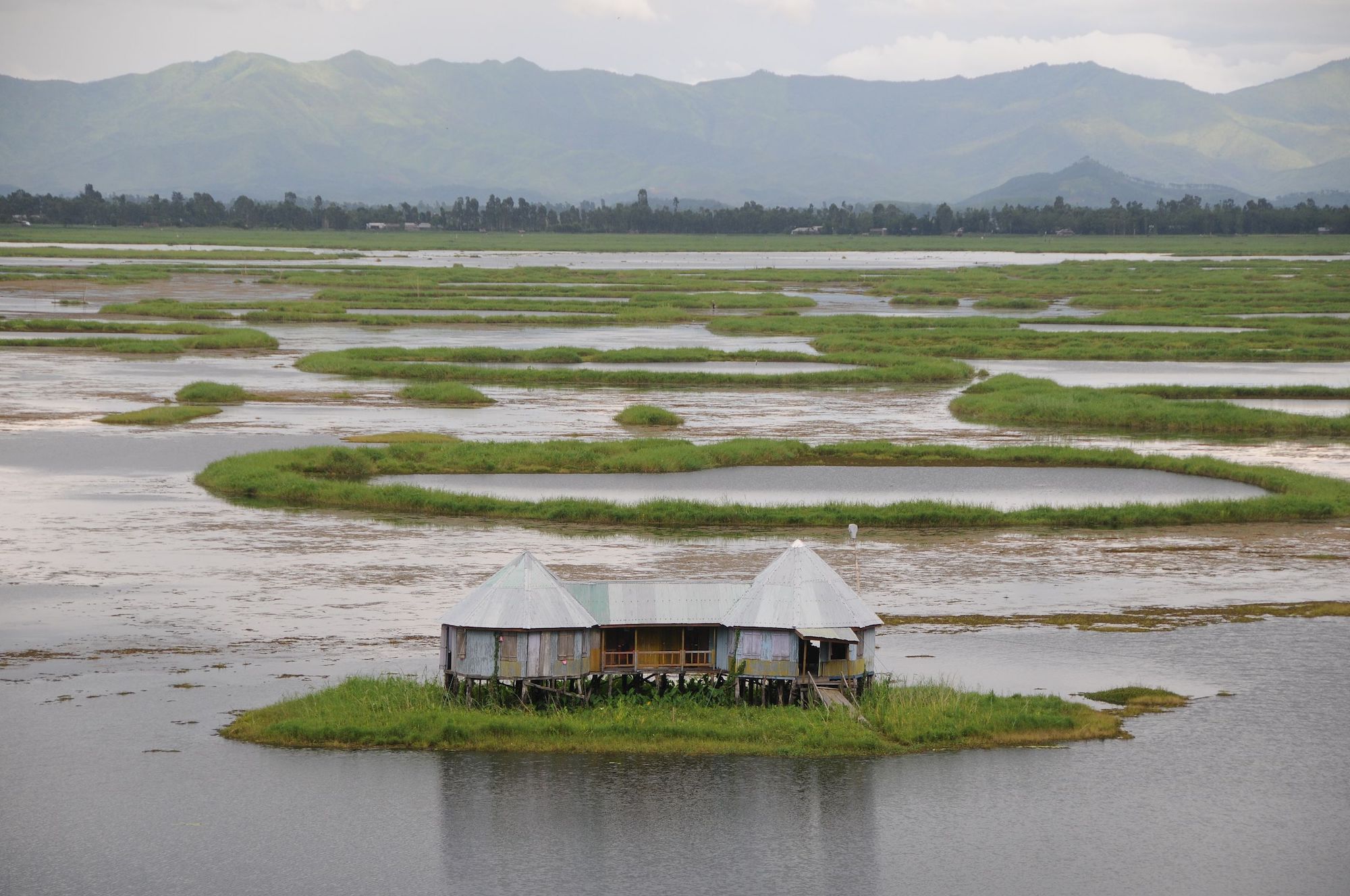
A home on Loktak Lake. © Sharada Prasad CS / Wikimedia Commons Although these are plants, the phumdis deserve a special mention. These are a unique flora and freshwater habitat found in Manipur, a state in the northeastern region of India.
Several thousands of these floating islands freckled across the Loktak Lake are vital for the state’s irrigation, drinking water, food supplies. The lake is also a source of livelihood for the rural fisherman who live in the surrounding areas and on phumdis. Phumdis are comprised of vegetation, soil, and organic matter (at different stages of decomposition) that have been thickened into a solid form giving them a trampoline like feel.
While only a thin circular layer is visible at the water surface, most of the mass (80%) lies beneath. They are sturdy enough to support local establishments such as huts and schools. The phumdis are home to around 200 species of aquatic plants and 400 species of animals, including the rare Indian python and the endangered brow-antlered sangai, or “dancing deer,” whose hooves have adapted to the island’s spongy ground.
The world’s only floating national park is the largest single mass of phumdi is in the southeastern part of the lake, covering an area of 40 square kilometers.
Like several freshwater species, phumdis are also currently threatened by dam construction which is causing them to thin and break apart due to higher water levels.
The continued discovery of new species shows that there is still much to explore and discover within the freshwater realm in India. Unfortunately, the unprecedented deterioration and the ongoing pressure and demand for water resources have deemed (or rather doomed) the freshwater ecosystems as one of the most degraded in the world.
We will need to take urgent and widespread action in order to conserve and restore these valuable ecosystems. Only then we can only hope to continue to explore our wonderous waters for the wild and the weird.
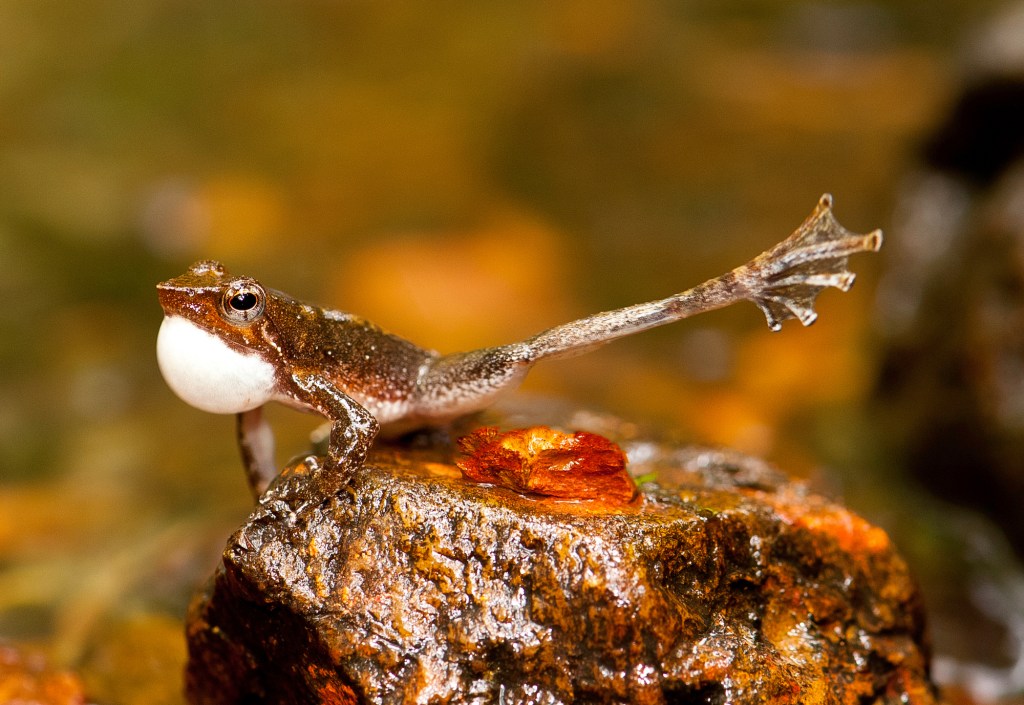



Join the Discussion